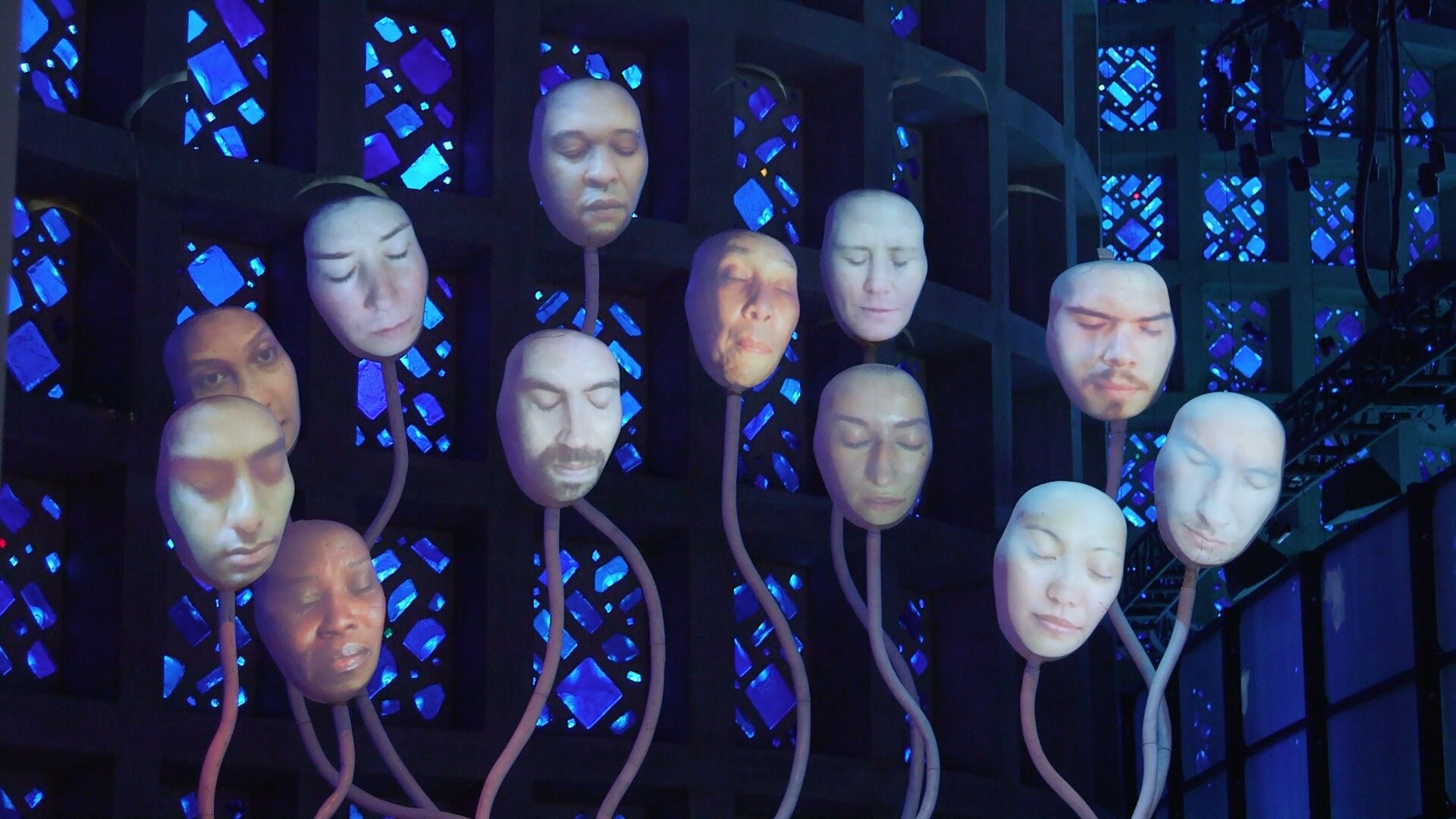New Mutant Monday #85 - Fengchao Xinshen

Animals were not the only life-form that was affected by the introduction of the Uplift virus. Plants were also changed. One particular plant was the common kelp plant, found along the shoreline of North America.
This particular species of kelp mutated to the point that it gained true sentience and discovered that it could use a limited form of metamorph, allowing it to take on the shape of humanoids and other creatures.
Physically the creature looks like a patch of kelp, floating lazily in the currents, the fronds waving and catching minute creatures to consume and gaining energy from the sun’s rays that penetrate the depths.
Anyone looking closely will see that many of the fronds have small black orbs located near the tips. They look like little marbles or possibly tiny obsidian snails, but are in fact the creatures eyes.
The plant is not stuck in one location, but can take any shape it desires and uproot itself from the ocean floor. Any shape it takes will gain the shapes natural attacks, but will not gain any mutations or mental abilities. Also any shape it takes will easily be distinguished from the original species due to the fact that it is clearly made out of kelp fronds.
The creatures have created a society that is based loosely upon ancient nobility and royalty, with the most intelligent members of the species being the royalty and nobles, with the rest the commoners.
These plant-creatures build communities just off the shoreline, using rock and natural water-resistant materials to create buildings and homes. They even use the wrecks of ships and other structures that are able to resist the eventual corrosion of the salt-water. The largest capital, where the current king and queen reside, is located about two miles from the shores of the ancient ruins of Anchorage Alaska. There are dozens of other smaller communities up and down the coastline, going as far south as Seattle Washington, and some have been built along the Bering strait and colonies have been set up along the former Russian coast.
They are perfectly willing to trade with land-dwellers, offering up the bounty of the ocean to those who have trade-goods these creatures may want. They are also capable of travelling on land, but loath to do so, as they need to be kept moist at all times. If they are on dry land and do not have access to water, they will take 3d6 points of damage per hour as they dry up. Even fresh water is enough to keep them hale and whole, and any damage they have sustained due to drying out will be healed at a rate of 1d3+4 points per day.
These creatures have several options open to them during combat. They can use 1d4 fronds, which have wickedly sharp edges during combat. They can also use 1d6 fronds to attempt to grapple a target. Each frond is treated as a separate attack, and they can wrap around a target and not only squeeze, but cause tiny thorns to sprout, which will penetrate the flesh and begin to drain the blood and other fluids. The creature has Strength of 10 and for each frond that successfully wraps itself around a target, the Strength goes up by 2 points. To escape the fronds it requires Strength versus Strength check.
Each round the fronds are attacked, each one will inflict 1d3 points of squeezing damage and drain 1 point of blood, which the creature can use to heal any damage it has sustained. It cannot go past its starting hit point total using this method.
They can also use melee and artifact weapons, and will do so if such are available. It is very rare, but the creatures can likewise use armor, but sometimes it proves to be too difficult to use or maintain in the water. Still it is not unheard of.
These creatures have two methods of reproduction. First is that every year they will produce 3d20 seeds, which they will plant in the ocean floor in their communities. They also tend to release 1d12 seeds into the ocean currents and allow the currents to carry them away. Sometimes these seeds will find a place to burrow and germinate, most of the time they don’t. These create wild versions of these creatures, which will eventually be discovered or find one another and set up their own communities and colonies. It takes 14 months for these creatures to grow to adulthood and until this point, they are incapable of moving from wherever they took root, and this makes them vulnerable.
The other method is that once they have killed a target through fluid drain, the fronds will go to root in the body of the target and merge with the flesh. Then begins a transformation that takes six months, converting all the flesh and bone into plant-matter. The creature will absorb the brain, taking the memories and personality of the victim at the same time. The creature will likewise be imbued with the targets mental mutations (if any). They will be the same in every aspect except for physical mutations and they will no longer have any loyalty towards former friends, companions and family. They will only possess loyalty to their new race and the royalty.
Mutations: Aberrant form (natural weapons), metamorph (modified)
No. Enc: 2d6
Alignment: Lawful
Movement: 60’ (20’) Land
210’ (70’) Swimming
AC: 5
HD: 7
Attacks: See description
Damage: See description
Save: L7
Morale: 8
Hoard Class: I, II, IV, VIII, XIV, 50% chance of 2 melee weapons, 20% of water-resistant armor, 25% chance of 1 water-resistant artifact weapon.
No. Enc: 1
Alignment: Chaotic
Movement: 90’ (30’) Psionic flight
AC: 6
HD: 6-24
Attacks: Special, see description
Damage: by mutation – see description
Save: L6-20
Morale: 11
Hoard Class: XVII



